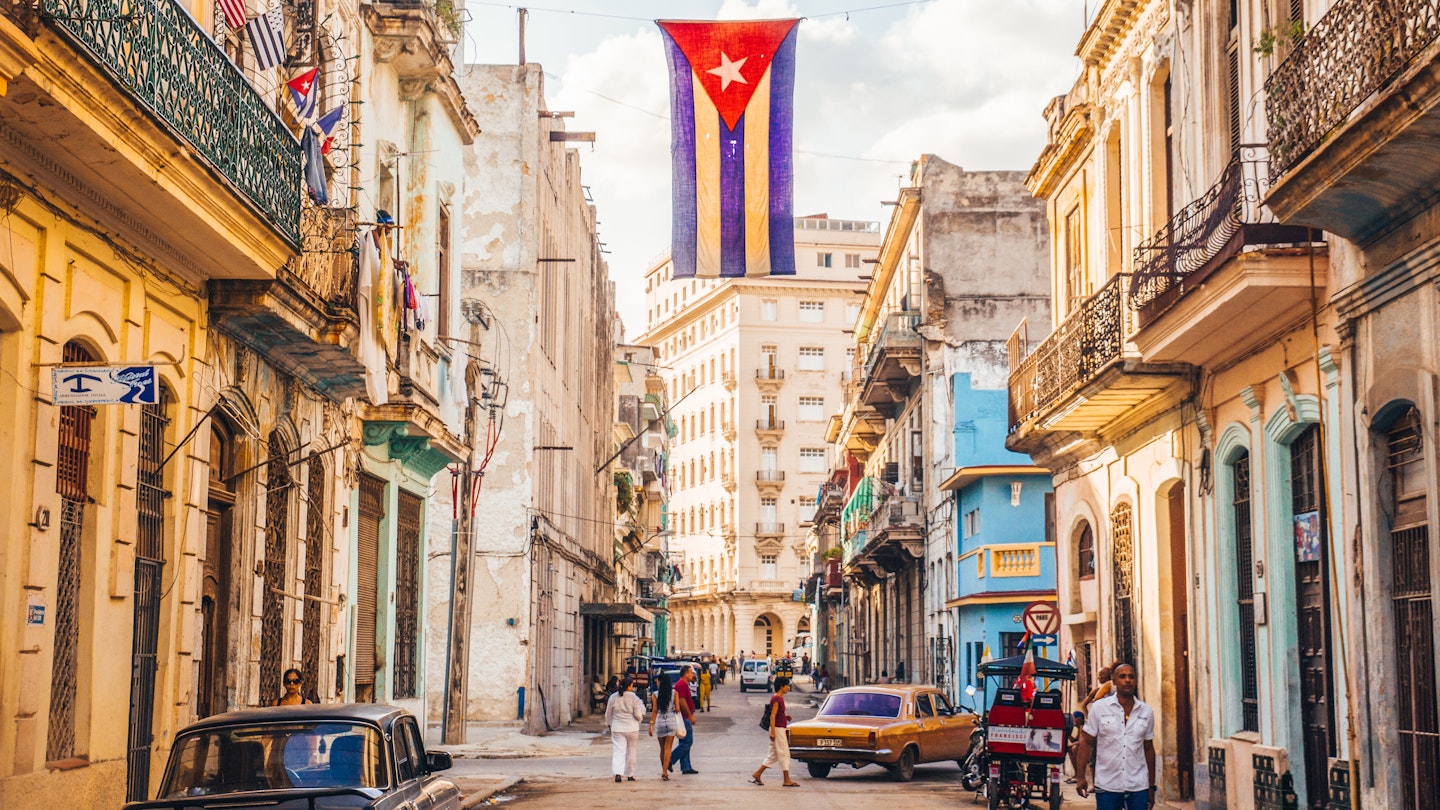Cuba and I go back a long way. As a travel writer and occasional tourist, I’ve been traveling to the country for nearly 25 years, from the economic crises of the 1990s to the heady days of 2016 when President Obama and The Rolling Stones dropped by in the same month. I secretly dreamed it would be the first place I revisited when coronavirus restrictions were lifted.
The opportunity cropped up sooner than I expected. In early July, Cuba tentatively announced it was ready to reopen several of its offshore islands to tourism. Even better, to lure back nervous travelers and help boost the country’s beleaguered economy, all international visitors were to be given a free COVID-19 test on arrival.
By September, the first airplanes began flying from Canada to Cayo Coco, a large tropical key off the north coast, home to 30 all-inclusive resorts but no permanent Cuban population. Cayo Coco was to be a pilot scheme, the first stage of Cuba’s phased reopening. By screening everyone who entered, including hotel workers bused in via a causeway from the Cuban mainland, the government would create a unique COVID-free vacation zone.
Planning my trip
After scouring the internet for deals and flight information, I decided on Air Canada, the first Cuba-bound airline to reactivate flights in September. My package included return flights from Vancouver, a mandatory hotel reservation, and special COVID-19 medical insurance. The trip cost CAN$912 (approximately US$693) covering hotel (including food and drink), bus transfers, return flights from Vancouver, and insurance. However, it’s important to note that rates may start going up in November.
For this trip, at least, I would be confined to an all-inclusive resort strip off Cuba’s north coast with no access to the mainland. Nevertheless, the journey came with inherent risks. A positive COVID-19 test at the airport would result in up to two weeks in a Cuban hospital. Similarly, upon returning home, I would face a 14-day quarantine.
Weighing up the pros and cons, curiosity prevailed over indecision. In the unpredictable world of travel writing, venturing into the unknown is part of the adventure. I loaded up on hand sanitizer, obtained a good mask for the plane, and prepared to head south.
Cuba and the pandemic
In the global battle to mitigate coronavirus, Cuba has emerged as the New Zealand of the Americas: the country currently has the lowest death rate (per million inhabitants) in Latin America. In a nominally socialist country, state control and central planning have been effective in containing the virus.
Roy Perez, co-owner of Roy’s Terrace Inn, shared insights into Cuba’s approach. “Cuba has overcome the pandemic thanks to a ‘prevention and control’ plan, prepared in January 2020. This included training medical staff, establishing quarantine facilities, implementing special contact-tracing processes, and informing the public about symptoms and precautions.” He added that medical students went door-to-door to screen thousands of people daily, with masks remaining mandatory and strict fines for non-compliance.
With 10% of Cuba’s economy reliant on tourism, the eagerness for visitors to return is palpable. As Roy stated, “Economically speaking, Cubans are more than ready for visitors,” despite underlying fears of potential outbreaks. Luis Miguel, who manages Casa 1932 in Havana, is equally optimistic, stating that he’s ready to reopen with improved standards of hygiene.
Arriving in Cuba
Upon arrival at a deserted Vancouver airport for my flight to Toronto, I felt relieved to see middle seats left empty on the aircraft. Despite this, paranoia had me wearing two face masks and enduring a nervous flight. The connecting flight, however, was packed, with many weary Canadians trying to return to normalcy.
Landing at Cayo Coco’s Jardines del Rey airport, the disembarkation process was smooth and efficient, with quick COVID-19 testing, customs, and temperature checks completed in under an hour. The warm Cuban welcome included smiles, music, and festive drinks, which felt both refreshing and reassuring.
A surreal hotel experience
I stayed at Hotel Gran Muthu on Cayo Guillermo, where the atmosphere was tranquil and serene due to low guest numbers. Following the arrival of our COVID-19 test results (all negative), the mandatory masks were joyfully discarded, allowing for genuine interactions once more.
For the next week, I enjoyed my time exploring deserted beaches, searching for flamingos, and fishing. The peaceful setting felt remarkably safe amid ongoing global concerns about COVID-19.
Safety measures and reopening
Cuba’s efforts to manage the pandemic and ensure safe tourism are commendable. While I visited, six hotels were operational, with additional tourist zones like Cayo Santa María and Varadero slated to open soon.
Hotels are well staffed with medical professionals, equipped with sanitization supplies, and adhere strictly to health protocols. While no system can guarantee complete safety, Cuba’s reopening has proven relatively low-risk, with very few reported cases.
Traveling to Cuba
TUI Group has resumed flights from the UK to Cuba, with travelers required to book full hotel packages and remain within resort zones. Meanwhile, Air Canada Vacations operates weekly flights from Toronto and Montreal, with other airlines such as Westjet and Sunwing set to follow suit.
Currently, Havana remains closed to international visitors, with no specific reopening date announced. However, interest in returning to Cuba is on the rise, with opportunities for a safe and welcoming experience.




